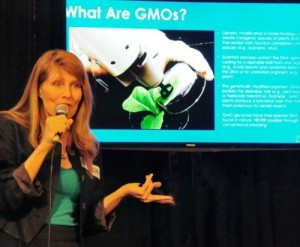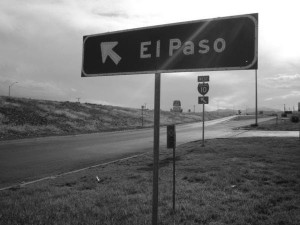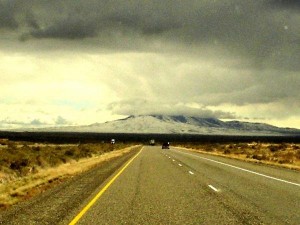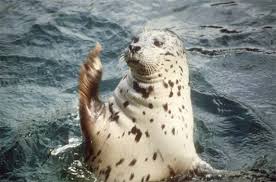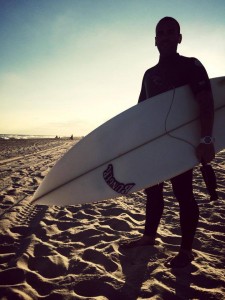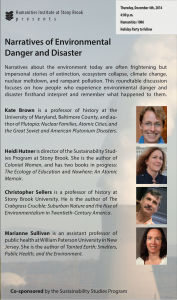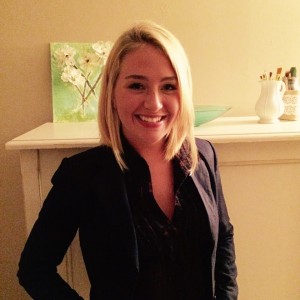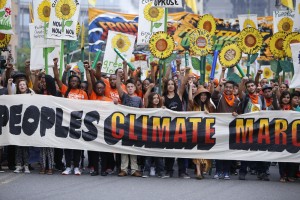
People’s Climate March, NYC, September 21, 2014.
Over a month out from the People’s Climate March, while many dwell on what it did not or will not do, let me venture a hopeful prediction, from the longer vantage point of the historian. With a size of surprising, historic proportion, it showed climate activism may well have broken out of the mold of its “environmental” predecessors, established half a century ago. That’s a good thing, not least for those who think of themselves as “environmentalists.”
As has been noted, the closest things we’ve seen in recent decades to the as many as 400,000 drawn to New York City on September 21 were the rally against the Iraq War not long after 9-11, the Million Men and Women marches of the 1990s following in the tradition of civil rights, and a 1982 gathering in Central Park to protest Reagan’s nuclear build-up. Thematically, however, a better historical touchstone is the first Earth Day in 1970, still in many respects the high-water mark for popular demonstrations on behalf of the environment in this country.
Unaided by the organizing facility of modern social media, and without a United Nations summit to target, Earth Day 1970 centered much less on New York City than did the Climate March. A Union Square event, while its single biggest, drew only 20,000 people at its peak moment. And the first Earth Day happened almost entirely inside the US, compared to the 162 countries that reportedly hosted events this September 21.
Inside America, however, the first Earth Day mobilized far more people—some 20 million according the organizers–across a vaster array of places, not just cities but suburbs. Through a host of smaller changes, but nowhere more so than through this event, the much older cause of “conservation” cracked apart, revealing a newer and stronger movement, more massive and popular, just then becoming known as “environmentalism.” Though convened by a senator (Gaylord Nelson, D-Wisc) and led a national organizing group (Environmental Action), Earth seemed to nearly “organize itself” (Nelson’s words), especially around the largest and most sprawling of cities. First and foremost of its achievements was to confirm just how widespread and active was the constituency for what was then a newly woven tapestry of concerns, “the environment.”
A similar transformation may be happening right now. The unexpected success of the People’s Climate March signaled how, as with the outpouring of the first Earth Day, whole new veins and modes of activism had already been flourishing. From what I saw, the climate movement as a whole is also forging an identity for itself that looks historically novel, precisely by how it is breaking with what we for the last half-century have called “environmentalism.”
As a college professor at Stony Brook University, I saw suburban roots to participation in the climate march, reflected in my train car heading into the city from Long Island, that were comparable to those of the first Earth Day, but in some ways more expansive. Of the two buses that left from Stony Brook University that morning, one of them, predictably, was sponsored by the Sustainability Program. The source of the other bus was more surprising, given how little environmentalists and labor have gotten along: the local chapter of SBU’s staff and faculty union, the UUP (Union of University Professionals). I myself took a 9 a.m. train from Huntington to get to the rally. Within my car, two church groups, Unitarian and Presbyterian, may have outnumbered the Sierra Club contingent. Remarkably, given the long-standing reputation of environmentalism as a “white” cause, a significant slice of those were black or brown–a microcosm of those represented in the march itself, it turned out.
What had inspired so many people to give over their Sunday to a downtown protest? Those I knew who responded were long since convinced of the reality and dangers of climate change, even though many had little inkling of the writings of Bill McKibben or Naomi Klein. They were largely frustrated with politics, not just on this but on other fronts. It is difficult to over-estimate how Superstorm Sandy fed their willingness. Two years prior, we all knew people whose cars or houses had been smashed by wind-felled trees; talk had swirled as well about the planetary trends it might reflect and portend.
Once we’d found our way out of the train, into my city, and in the midst of the march itself, I continued to be struck by the mixture of ages and races, and now by marchers’ tacit dialogue with their Earth Day predecessors. Some imagery and sloganeering might just as easily have festooned the signs back in 1970, especially that concerning the planet, “the earth.” What I didn’t see, hardly at all, was any talk about “the environment.” That omission—hard to see unless you were looking for it—hinted at the novelty of what was afoot in the flow of thousands down 5th Avenue. Partly this absence emanated from the top down, since organizers had foisted traditional “environmental organizations” into their own ostensibly small corner of the march’s map. But older talk about “the environment” was also simply drowned out by all else the many placards and slogans now had to say.
Over the last decade around New York, a host of more localized concerns and groups have mobilized around a new bevvy of “green” causes: banding together to rebuild after Sandy, campaigning for locally grown and organic food, and fighting against fracking. At the People’s Climate March, they found welcome and common cause with those pushing for divestiture from fossil fuels, as well as those from more far flung locales, those rebuilding on the Gulf Coast after Katrina, those from island nations and from other communities on the “front line” of environmental change. In an earlier era, “the environment” had gained traction because of how it linked so many issues long considered separate, from pollution to wilderness preservation. Now “climate” may have proven itself sufficiently capacious to serve as an entire movement’s umbrella.
Less noted in prominent accounts of the near protean mix of people and causes that was the People’s Climate March, one other departure from environmentalism of the 1960’s and 70’s was also clear to me. The sheer diversity of marchers seemed coupled to how, in a big way, so many had recast their cause, as not just about the planet but about “justice.” That word hardly ever issued from the pens of Rachel Carson, the writers of Sierra Club newsletters, or even from McKibben in his 1989 The End of Nature. But on September 21, no word echoed more ubiquitously across the banners and cries of climate marchers, outside “climate” itself.
Leaders of environmental justice movement undoubtedly feel vindicated: after thirty years of struggling to get environmentalists to take equity seriously, justice has now become this new movement’s go-to lingo. But framing this movement as one for climate justice accomplishes a good deal more than welcoming environmental justice advocates into its front ranks.
Justice, after all, is a term with which all sorts of faiths are deeply familiar and engaged; it invites an involvement from religious communities that an older environmentalism rarely was able to attract. Climate justice also bids a welcome and resonant call to many other groups and activists who have long seen their own fights as against social injustices: movements on behalf of labor and minorities and women, for prisoners’ and LGBT and housing —much of the gamut of left-leaning social activism in our time. In its plan, at least, the People’s Climate March invited, and reserved places for, all of these groups. Justice, on which environmental movement of the 1970’s was nearly mute, became the ethical and rhetorical vehicle by which marchers envisioned, at least, uniting the most aggrieved of modern society into a shared cry for action against climate change.
Unlike the first Earth Day, the lack of receptiveness to the March’s message among many politicians and their constituencies means that we can hardly expect it to spur either Congressional action or a more effective UN treaty—not any time soon. There is a more attainable outcome, though: like the first Earth Day, to inspire and energize a new generation of the like-minded who can build on its momentum.
Whether the March itself actually drew in all it invited, whether its surprising breadth and energy can be sustained or surpassed, the next months and years will tell. What is clear is that with the People’s Climate March, what we have long called environmentalism has shaken itself out of grassroots torpor. And in so doing, it may well have already become something else altogether; a new movement—shall we call it climatism?—has arrived to claim its own day in the sun.

Dr. Christopher Sellers.
By Christopher Sellers, Ph.D.
Professor of History
Stony Brook University
Dr. Sellers is currently co-teaching SUS350, Perspectives on Sustainability, with Dr. Heidi Hutner of the Sustainability Studies Program.
Post originally appeared on The Energy Collective Column, November 4, 2014.
Photo Credit: Climate Activism and Changing Attitudes/shutterstock



